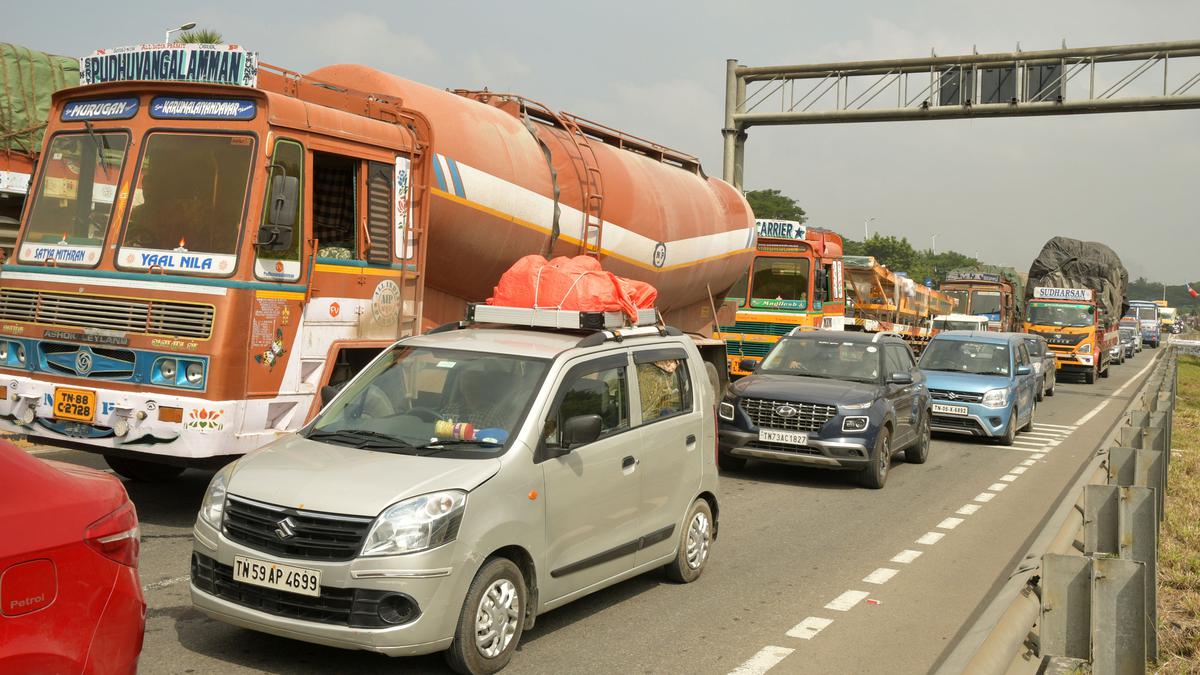
Traffic jam turns worse on Tiruchi-Chennai Bypass
The Hindu
With the Chennai Bypass in Tiruchi turning out to be a major traffic bottleneck on the Chennai-Tiruchi-Madurai National Highway section, following the closure of an overbridge on one of the carriageways, the district administration has announced traffic diversions on various highways around Tiruchi in an attempt to reduce the volume of traffic passing through the city
With the Chennai Bypass in Tiruchi turning out to be a major traffic bottleneck on the Chennai-Tiruchi-Madurai National Highway section, following the closure of an overbridge on one of the carriageways, the district administration has announced traffic diversions on various highways around Tiruchi in an attempt to reduce the volume of traffic passing through the city.
The overbridge was closed to traffic on Thursday after its approach road was damaged, triggering huge traffic snarls on the highway. The traffic jam turned worse on Saturday with vehicles lining up for a couple of kms on both sides of the Ponmalai overbridge as traffic had to be funnelled into the other two-lane carriageway. Motorists complained that it took about 40-60 minutes to cross the bypass in the city in the bumper-to-bumper crawl.
Meanwhile, the National Highways Authority of India (NHAI) continued to execute ad hoc measures by demolishing the concrete median near the G. Corner junction to ease the flow of heavy vehicles. However, given the huge volume of traffic, the police and employees of the NHAI struggled to regulate the traffic.
Additional traffic police personnel were deployed on the stretch even as Ministers K.N. Nehru and Anbil Mahesh Poyyamozhi besides Collector M.Pradeep Kumar and City Police Commissioner N. Kamini inspected the spot.
A team of faculty members from the Indian Institute of Technology, Madras, on Saturday inspected the site to study the problem and suggest appropriate remedial measures. The team, along with the experts of the NIT, Tiruchi, would submit a report on the best option available to repair the structure within a couple of days, NHAI sources told The Hindu. “The rectification work will be executed based on their recommendations,” the sources added.
On Saturday, the officials indicated that the repairs would take a month to complete. “We have to take into consideration various safety aspects. We have to carefully dismantle the damaged portion of the approach and the RE blocks segment-by-segment before rebuilding it,” an official said. He indicated that preliminary steps such as mobilisation of men and machinery were under way to take up the rectification work.

The Karnataka government has drafted a comprehensive master plan for the integrated development of Kukke Subrahmanya temple, the State’s highest revenue-generating temple managed by the Hindu Religious Institutions and Charitable Endowments Department. The redevelopment initiative is estimated to cost around ₹254 crore and aims to enhance infrastructure and facilities for devotees.












